When transitioning from in-house data entry to a reliable data entry vendor, you must carefully plan each step of the process. From setting clear goals and selecting the right vendor to training your teams and ensuring data security, the transition requires meticulous attention to detail. By following a structured approach and focusing on quality standards, you can seamlessly shift towards outsourcing data entry tasks and optimizing your operations.
Identifying Transition Goals
When transitioning to a new data entry vendor, the initial step is to clearly define and identify your transition goals. Setting expectations is crucial in ensuring a smooth and successful transition. Begin by outlining what you aim to achieve by transitioning to a new data entry vendor. This could include improving data accuracy, enhancing efficiency, or reducing costs. Clearly articulating these goals will provide a roadmap for the transition process and help align all stakeholders towards a common objective.
Measuring success is another key component of identifying transition goals. Determine how you will evaluate the effectiveness of the transition. This could involve metrics such as data entry accuracy rates, turnaround times, or cost savings achieved. By establishing clear and measurable success criteria upfront, you can track progress, make adjustments as needed, and ensure that the transition is delivering the desired outcomes.
Choosing the Right Vendor
When choosing the right data entry vendor, consider key factors such as Vendor Selection Criteria, Pricing and Contracts, and Quality Assurance Measures. These elements are crucial in ensuring a smooth transition and maintaining data accuracy. Evaluating these aspects will help you make an informed decision that aligns with your organization’s needs and expectations.
Vendor Selection Criteria
To ensure a successful transition to a reliable data entry vendor, selecting the right vendor is crucial. When evaluating potential vendors, consider their track record for accuracy, timeliness, and security. Look for vendors with a proven history of data entry excellence, preferably in your industry or a related field. Performance monitoring is essential for maintaining quality standards. Ensure that the vendor has robust systems in place for ongoing monitoring and feedback mechanisms. Request information on their quality control processes, error rates, and how they handle data security.
Additionally, assess the vendor’s scalability and flexibility to accommodate your business needs. A reliable vendor should be able to adapt to fluctuations in workload and provide services that align with your data entry requirements. Check for references or case studies that demonstrate successful vendor-client relationships. Ultimately, the vendor you choose should not only meet your current data entry needs but also be a long-term partner in supporting your business growth and success.
Pricing and Contracts
For selecting the right data entry vendor, assessing the pricing and contract terms is a critical step in the decision-making process. When negotiating rates with potential vendors, consider not only the upfront costs but also any potential hidden fees or additional charges that may arise. It’s crucial to have a clear understanding of what is included in the pricing structure to avoid any surprises later on.
In addition to rates, carefully review the contract terms offered by each vendor. Pay close attention to aspects such as the length of the contract, cancellation policies, and any penalties for early termination. Ensure that the contract aligns with your business needs and provides flexibility for potential changes in the future.
Quality Assurance Measures
Assessing the quality assurance measures of potential data entry vendors is key to ensuring a smooth and reliable partnership. Data accuracy is a critical aspect to consider when selecting a vendor. Look for providers with a proven track record of maintaining high levels of accuracy in their data entry processes. Request samples or case studies to gauge their accuracy rates and ensure they align with your expectations.
Additionally, process improvement is essential for long-term success. Choose a vendor that not only focuses on current data entry needs but also shows a commitment to continuously enhancing their processes. Inquire about their quality control procedures, error handling mechanisms, and strategies for identifying and rectifying issues promptly.
Preparing Internal Teams
Consider organizing a comprehensive training program to equip your internal teams with the necessary skills and knowledge for a smooth transition to a new data entry vendor. Team training is crucial to ensure that all members understand the processes, quality standards, and expectations when working with a data entry vendor. Develop training sessions that cover data entry procedures, quality assurance protocols, and communication strategies to facilitate seamless collaboration between your team and the vendor. Encourage active participation, provide hands-on practice, and offer resources for ongoing support. Effective communication strategies should be emphasized to foster clear and open dialogue between your team and the vendor, promoting a shared understanding of project requirements and deadlines. Additionally, establish feedback mechanisms to address any issues promptly and improve processes continuously. By preparing your internal teams adequately, you can enhance the efficiency and effectiveness of the transition to a reliable data entry vendor.
Mapping Out Data Transfer Process
To ensure a seamless integration of your data entry processes with a new vendor, the next step involves mapping out the data transfer process.
- Establish Data Validation Protocols
- Define specific criteria for data accuracy and completeness.
- Implement validation checks to ensure the quality of transferred data.
- Set up regular audits to maintain data integrity throughout the process.
- Conduct Comprehensive Training Sessions
- Train your team on the new data entry processes and systems.
- Provide hands-on practice to familiarize staff with the data transfer tools.
- Offer refresher courses to address any emerging challenges or questions.
- Create Data Transfer Guidelines
- Develop clear instructions on how data should be transferred to the vendor.
- Include step-by-step procedures for handling different types of data.
- Document best practices to streamline the transfer process and minimize errors.
Establishing Quality Assurance Measures
Quality assurance measures are essential for maintaining the accuracy and reliability of data entry processes. To ensure data accuracy, implement thorough quality checks at each stage of the data entry process. Start by creating standardized guidelines for data entry operators to follow. These guidelines should include instructions on proper data formatting, validation procedures, and error correction protocols.
Utilize automated tools such as data validation software to detect and prevent errors in real-time. Regularly review and update these tools to adapt to changing data entry requirements. Additionally, conduct periodic audits of the data entry work to identify any recurring errors or patterns that may require additional training or process improvements.
Encourage a culture of accountability among data entry team members by establishing clear performance metrics related to data accuracy and error prevention. Provide regular feedback and training sessions to address any identified issues promptly. By consistently monitoring and refining quality assurance measures, you can enhance the overall accuracy and reliability of your data entry processes.
Ensuring Data Security
When transitioning to a new data entry vendor, ensuring data security is paramount. Implementing data encryption is crucial to safeguard sensitive information from unauthorized access. Establishing strict access control measures and conducting regular security audits are essential steps in maintaining the integrity and confidentiality of your data.
Data Encryption Importance
Data security is paramount in today’s digital landscape, especially when it comes to data entry processes. Implementing robust encryption protocols is crucial to safeguarding sensitive information and ensuring data privacy. Here are three reasons why data encryption is of utmost importance:
- Protection against Unauthorized Access: Encryption converts data into a code that can only be deciphered with the appropriate key. This prevents unauthorized individuals from accessing and misusing sensitive data, enhancing overall data security.
- Compliance with Regulations: Many industries have strict data privacy regulations in place, such as GDPR or HIPAA. By encrypting data, businesses can ensure compliance with these regulations and avoid potential legal consequences related to data breaches.
- Securing Data in Transit and at Rest: Encryption not only protects data while it is being transmitted between systems but also when it is stored on servers or in the cloud. This comprehensive approach ensures that data remains secure at all times, reducing the risk of unauthorized access or data leaks.
Access Control Measures
Moving from the discussion on data encryption importance, your focus now shifts towards ensuring data security through robust access control measures. Security protocols play a vital role in safeguarding sensitive information. Implementing stringent security protocols ensures that only authorized personnel can access, view, or modify data. By setting up user permissions, you can control who has access to specific data sets or systems within your organization. This granular control over user permissions helps prevent unauthorized access and minimizes the risk of data breaches.
To enhance data security, consider implementing multi-factor authentication for users accessing sensitive information. This additional layer of security ensures that only authenticated users can access critical data, adding an extra level of protection. Regularly review and update user permissions to align with job roles and responsibilities, ensuring that access is granted on a need-to-know basis. By consistently monitoring and adjusting security protocols and user permissions, you can effectively mitigate the risks associated with data breaches and unauthorized access.
Regular Security Audits
Conducting regular security audits is imperative for ensuring the integrity and confidentiality of your organization’s data. By consistently evaluating your security measures, you can identify vulnerabilities and address them promptly, safeguarding sensitive information from potential breaches. Here are three key aspects to consider regarding security audits:
- Security Compliance: Ensure that your security protocols align with industry standards and regulations to maintain the trust of your clients and stakeholders. Regular audits help you validate your compliance status and make any necessary adjustments to meet evolving requirements.
- Risk Assessment: Conduct thorough risk assessments during security audits to identify potential threats and vulnerabilities. This proactive approach allows you to prioritize security enhancements based on the level of risk they pose to your data integrity.
- Continuous Improvement: Use the insights gained from security audits to implement continuous improvements to your data security practices. Regular evaluations and enhancements will help you stay ahead of emerging threats and ensure a robust security posture for your organization.
Frequently Asked Questions
How Can We Ensure a Smooth Transition Without Disrupting Daily Operations?
To ensure a smooth transition without disrupting daily operations, change management strategies are key. Prioritize thorough employee training on new processes. Communicate clearly, involve staff in decision-making, and provide support throughout the shift. It’s crucial for success.
What Happens if We Encounter Unexpected Challenges During the Transition Process?
If unexpected challenges arise during the transition, stay adaptable. Handle delays by assessing the situation, making necessary adjustments. Overcome obstacles through effective problem-solving and clear communication. Focus on finding solutions to ensure a successful transition process.
Are There Any Hidden Costs or Fees Associated With Switching to a Data Entry Vendor?
When switching to a data entry vendor, hidden costs can arise. Ensure a thorough cost analysis before committing. Negotiate contracts wisely. Seek clear onboarding processes and available training resources to ease the transition and avoid unexpected expenses.
How Do We Maintain Data Accuracy and Consistency After Transitioning to a Vendor?
To maintain data accuracy and consistency after transitioning to a vendor, focus on implementing robust quality control measures. Ensure your team receives adequate training support to adapt smoothly. Regular audits and feedback loops will help uphold high standards.
What Steps Can We Take to Monitor and Evaluate the Performance of the Data Entry Vendor?
To monitor and evaluate your data entry vendor’s performance, implement performance metrics and quality control measures. Gather vendor feedback regularly for process improvements. Stay detail-oriented to ensure accuracy and consistency in data entry tasks.




